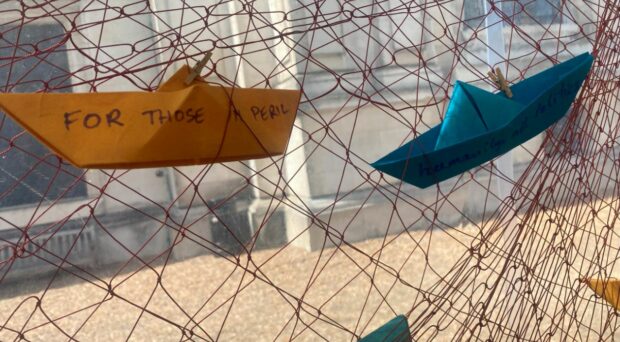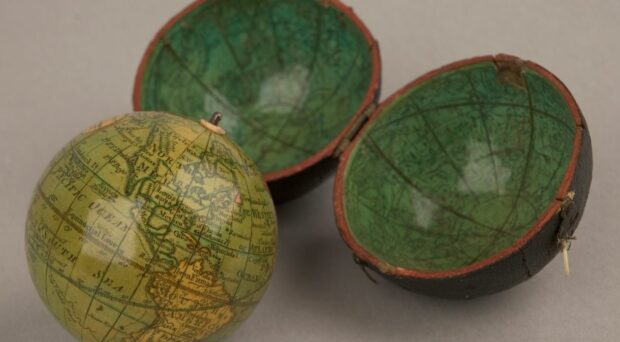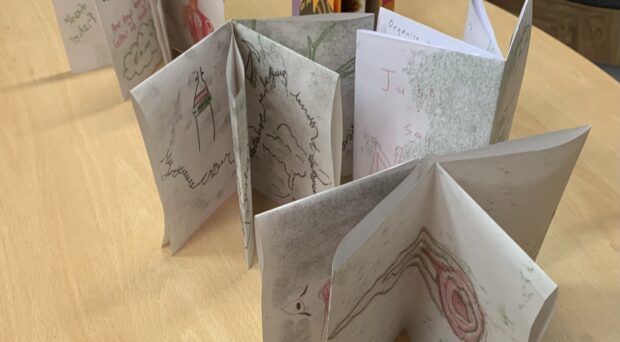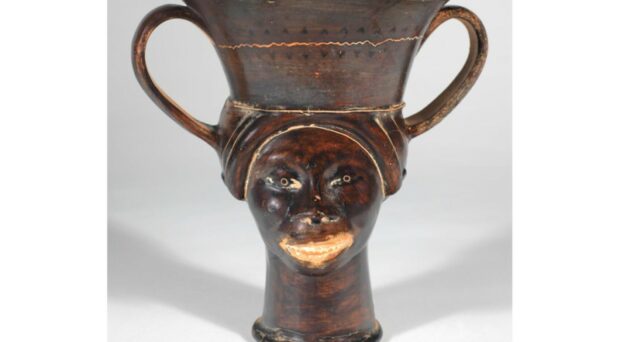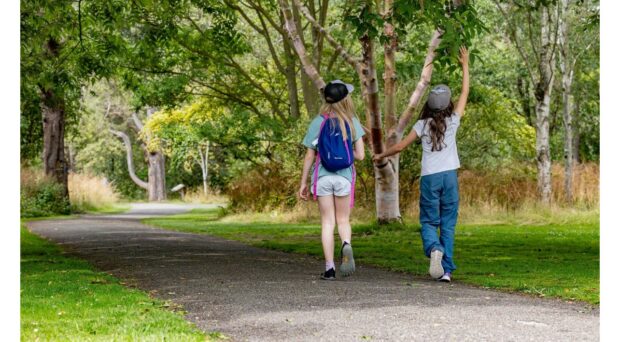Back in October 2016 we posted about our participation in the Arts Marketing Association’s Digital Marketing Academy and our live-streaming experiments. Now we’ve graduated (whoot!) it’s about time we shared our experiences and the lessons we learned.
In the beginning…
“Behind the scenes alert! We’ve asked our experts about their most unusual objects; the ones that make them mutter WTH? when they find them in store.”

We wanted to learn more about our online audiences. We also wanted to figure out how we could create better forms of engagement with them using the University of Cambridge Museums’ (UCM) social media platforms. There are all sorts of ways an organisation could choose to approach this, but for us, live streaming presented the best opportunity for experimentation, and was something we hadn’t properly tried out since it all exploded. We did four live streams across the museums, asking curators to talk about their most unusual object not currently on display. We packaged these up as part of a wider project called ‘Why is this Here?’ or ‘WTH?’ and aimed to present our audiences with a unique opportunity to get behind the scenes insights with an expert. Our most successful social media platforms are Twitter and Facebook, so we used Facebook Live and Periscope to compare them in terms of user-friendliness and audience engagement.
Vote now!
Experiment 1: would asking people to vote on which object was chosen for the live stream increase or encourage engagement for the stream itself? Did our audiences want to learn more about the Whipple Museum’s seemingly common protractor, or would they prefer the story surrounding a silver globe? Would the anatomy of a bee trump the head of a Port Jackson shark? They all had cool stories, so we didn’t really care which was chosen, but the hope was those voters would translate to viewers.
2 curators, 2 objects. Watch here: https://t.co/CuNk1Ih343 & reply ‘bee’ or ‘shark’ to decide who stars in our live stream this Thurs pic.twitter.com/wmENzjy6rD
— Cambridge Museums (@CamUnivMuseums) November 1, 2016
Result: Asking our audiences to vote for an object prior to the live stream was… an interesting learning curve. It worked quite well on Facebook. We uploaded the two opposing object images and asked people to ‘like’ the one they wanted us to feature. The other option was to comment ‘bee’ or ‘shark’. Both routes were straight forward enough and certainly helped in terms of spreading the word through users’ home feeds, but Twitter (relating to Periscope streams) was a different proposition. The old classic of ‘hearting’ for one or ‘retweeting’ for the other wasn’t great as it interferes with the original functions of the buttons, and generally the character count made it difficult to get your voting message across clearly in one tweet. Also, the way content moves on Social Media made it difficult to track the votes and engagement. Despite this, we muddled through and managed to collate them. (If you’re interested, the protractor and bee won the day.)
So did the voters come back for the streams? Certainly those with strong connections to the museums watched the streams, either live or later on. But otherwise, we found that the voters weren’t necessarily the ones watching, which seems to support much of what we’ve read around the immediacy of live streaming; about grabbing the attention of an audience that happens to be free and interested at that particular time.
The actual live streams
The top priority was to see what kind of engagement we could get from those watching the streams. Would a presenter work? Someone who could keep in mind a viewing audience, or would two curators battling for object supremacy be entertainment enough? It was time to find out.
Presenter
We pulled in Nick Oram (of Do Not Adjust Your Stage fame) to present a couple of the streams. His job was to help shape the conversation with the expert, ask questions, encourage audience interaction and keep an eye on audience questions and time.
Two curious objects, behind the scenes at The Polar Museum with Curator Charlotte Connelly & Nick Oram – join us!
Posted by University of Cambridge Museums on Friday, 25 November 2016
Battle of the curators
In this stream, two brave curators (Ed Turner and Jason Head) from the Museum of Zoology took on the task of everything Nick Oram was doing in the stream above. Whoever’s object wasn’t chosen became the ‘reluctant presenter’, which made for an entertaining start to proceedings.
Bee vs Shark, live in Museum of Zoology, Cambridge stores. Find out which one gets to tell its story…
Posted by University of Cambridge Museums on Thursday, 3 November 2016
In hindsight we felt the dedicated presenter, Nick, worked best for us and for those watching. It was good to have someone concentrating on the conversation and engaging the audience, while we were doing the filming. We were also trying to engage a wide audience, so the fact Nick was not from within the museums meant he asked questions which would seem obvious to those working on the inside. Things like ‘why do you wear gloves?’, or ‘why do you keep a common looking protractor in a science museum?’, all of which helped create an understanding for those new to museums, and we hoped would encourage a similar set of questions from viewers.
Set-up and tech
The initial plan was to move through the stores, but that was not possible due to security concerns from the museums (the wild dreams of a ‘Choose Your Own Adventure’ in museum stores had to be put on hold). On the plus side, it meant we could choose a spot with good lighting and WiFi signal and make sure everything was set in place. Strength of WiFi was a huge consideration for us, as the upload speed would affect the quality of the broadcast, especially on Periscope. Otherwise, our subjects were one side of the table, and we were the other. Simple.
To continue the ‘simple’ theme, our set-up was very straight forward and in the main we were happy with the quality, certainly on Facebook Live. Periscope seemed to have higher demands relating to broadband upload speeds. Most important was the tripod/monopod, as otherwise it was too shaky (see Zoology stream). Otherwise, we had a directional microphone which plugged straight into the phone.
Analytics
| Whipple Museum | Zoology Museum | The Polar Museum | Museum of Archaeology & Anthropology | |
|---|---|---|---|---|
| Platform | Periscope | Facebook Live | Facebook Live | Periscope |
| Pre-stream engagement | Facebook Reach: 49,526 Reactions: 330Twitter Impressions: 2,935 Total engagements: 167 | Facebook Reach: 42,240 Reactions: 175Twitter: Impressions: 3,270 Total engagements: 125YouTube: 658 views 15 Likes | Facebook Reach: 22,838 Reactions: 131Twitter Impressions: 2021 Total engagements: 54 | Facebook Reach: 1,271 Reactions: 1 Impressions: 2,218 Total engagements: 62 |
| Film length | 23:04 | 17:30 | 17:35 | 15:45 |
| Live viewers | 61 | Reach: 1264 | Reach: 17,434 | 62 |
| Replay viewers | 128 | Film views: 592 | Film views: 6343 | 208 |
| Reactions | 95 | 27 | 645 | 26 |
Platforms – lessons learned
In terms of engagement, Facebook Live was a clear winner. Even when we were promoting the Periscope broadcasts, there was far more interest on Facebook. We already have an established audience on there, and when our posts were shared by the University, which has a huge following, things really took off. It’s a good platform for sharing and pushing through networks, encouraging comments and engagement and keeping a record of what happened.
Periscope was a bit trickier as our audience is not really on there, and the stats following the stream were very limited. We hoped that our Twitter audience, which is mainly museum sector folk, would take the step over to Periscope, but the fact Twitter has integrated Periscope now tells us that it was always going to be tricky.
Take away points
- Don’t overthink > just do it
- Less is more > keep it simple and not too long
- Pre-marketing audience will be different to your live audience > unless dedicated
- Analytics > set-up reporting structure
- Facilitate > so that the audience feels addressed and engaged
- Storytelling is important > be interesting and creative
Overall we were really pleased with how the curators/experts in the museums got stuck in, with all of them showing a real enthusiasm for reaching new audiences. The live streams were simple to set-up and take down, yet the reach and engagement was far greater than many of our more technical and expensive film set-ups.
The best result of these experiments? We will be doing more.




